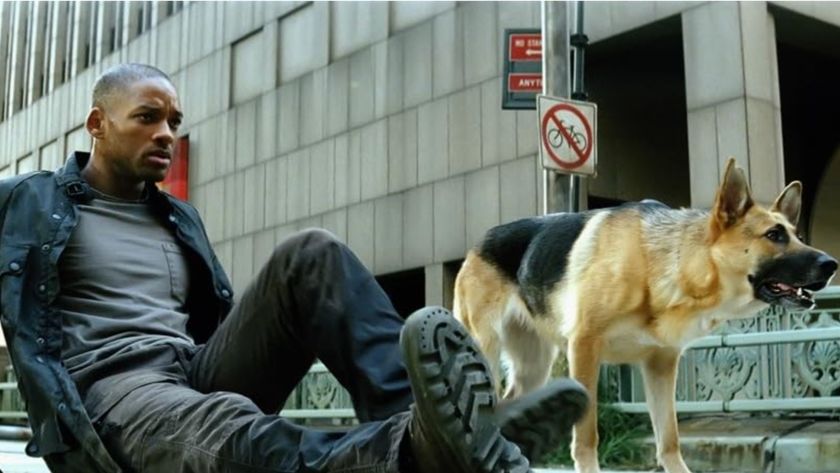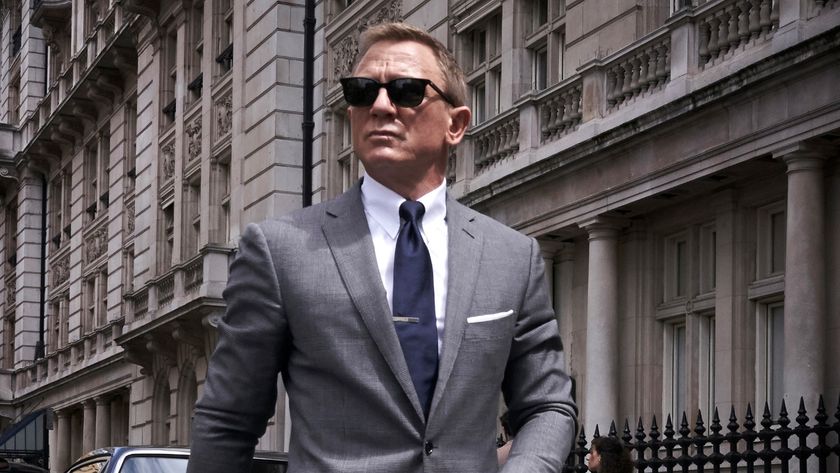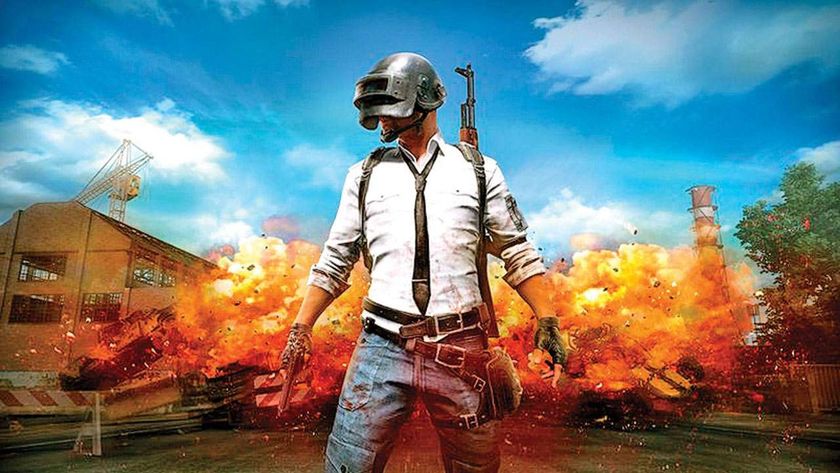Final Day of Kong Week: Exclusive Interview with Peter Jackson
With King Kong unleashed in cinemas, it’s time for the Kong-maker himself to chat about his colossal labour of love
When did King Kong first come to life for you?
He came to life even at the very beginning because we did animatics at the start of the process which were very crude animations where we made a very simple model of Kong. This is going back to post-production on Return Of The King. And during the course of doing those, the animators actually managed to get a lot of personality and character into what was this very blocky, simple, gorilla-shaped model. So I started to like Kong even in this very simple stage. And a lot of the things that we devised then are identical to the way they are in the movie now. That early work to me defined his personality, his character, the way that he reacted to situations. But he didn’t start to look like King Kong until only a few months ago.
Working with a character who’s 25-feet tall must have been a huge challenge…
It was the big difference between Gollum and Kong. Gollum was able to realistically interact with our characters on set because he was the same size as the hobbits and so it wasn’t a problem to block and rehearse scenes with Andy Serkis. With Kong, it limited what we could do on set with Andy. It was important that he was at the right place so that the actors could look up at him and see his eyes and see him performing Kong, but it did mean that he was stuck at the top of a cherrypicker. We cranked him 20 feet up in the air and he wasn’t really able to get down or move anywhere so it limited our ability to interact with him.
What about the motion capture stuff that Andy did?
It was interesting because a lot of the motion capture that we did with Andy, we had to slow it down to make him feel bigger. Andy is moving around and performing Kong and we were capturing his performance – which is what you see in the movie – but if we played it back in real time, he looks like a six-foot-high person being a gorilla. But if we slow it down 30 or 40 percent, he’s doing the same movements but they’re stretched out over a longer period of time and he immediately looks bigger, he looks like he’s carrying a huge amount of weight. He gained all the mass and scale that we needed.
Kong is a terrifying creature – how do you add layers of humanity to that?
That goes straight to the heart of why we’re making the movie. And we’ve done exactly what you described. It was important to us that there’s a very simple progression in the story, which is that you’re introduced to the situation on the island and to Kong, and at the beginning he’s a terrifying monster – we want him to be as scary as he can possibly be at the beginning. He takes the girls from the altar and he kills them, as he has done for decades. He takes Ann and he probably intends to kill her – she realises this because of the way he’s behaving. Then Ann manages to survive and the interesting part of Kong for us was to think what would really happen if a 25-foot-tall silverback gorilla took Ann Darrow, you know, how would he react to her and how would she try to survive. What happens in the story is he stays his hand from killing Ann and that proves to be his undoing, which is the tragedy of the story. The moment that he exercises humanity and follows his heart, he’s doomed.
How do you deal with that on a real level?
It’s about the gorilla’s behaviour. We studied gorillas, Andy Serkis went up to visit them in the Rwandan mountains, and Kong’s behaviour is based on what male silverbacks do in situations, how they protect their young and also how they dominate and use their body language. It was interesting to approach this fantasy story from that reality. But having him terrifying and scary was an important part of the equation. We don’t follow that convention where as soon as you start to empathise with Kong, we stop him from being terrifying. He’s still scary, he still turns around and kills sailors who are trying to save Ann, he doesn’t lose any of his power as a gorilla. It would have been an easy trap to fall into that once you started to empathise with him, we make him cute and benign. In our story, he’s always a wild animal and he’s always unpredictable. You never know what he’s going to do next.
Audiences today know a lot more about gorillas than audiences in 1933. What did that mean for you in terms of how you treated Kong on screen?
It’s meant that we have to honour gorillas. Gorillas are very honourable creatures and we have to look after them. If they were left to their own devices now, through the decades of hunting and killing and poaching and deforestation that’s occurred in their natural habitat, they would be extinct very, very soon. It’s almost as if we owe gorillas because we haven’t treated them very well over the last 100 years. The movies haven’t either because for a long time they became a clichéd movie monster, something brutish and terrifying. I guess the original 1933 Kong fits into that mould. So it’s interesting to take the same story of Kong but approach it from the point of view of making the gorilla more real. You don’t lose any power in the story by doing that. I think we have a duty to be as realistic as possible with Kong, and not to judge him either – not to paint him in the role of a villain or a monster, just treat him as a real animal.
Has the process of Kong been hugely different from Lord Of The Rings?
No, pretty similar. We didn’t realise until about three months ago that we were making a three-hour-long version of King Kong. It was hard to edit the movie. We had layers of complication on Kong when we were in the cutting room that we never had on the Lord Of The Rings films. For any scene with Kong in it, we had to not only look at all the footage that we shot on set, we had to look at all of Andy Serkis’s motion capture footage for the body movements, which he might have done 20 or 25 takes for, and then a separate capture for his facial expressions, so there might be another 25 takes of that. So we had to figure out what bit of his facial expression would go with which bit of his body movement and fit it into the bit of live action that we had. It was a slow, laborious process.
Sign up for the Total Film Newsletter
Bringing all the latest movie news, features, and reviews to your inbox
Has it surprised you how much Andy Serkis ended up being involved in creating Kong?
It has to some degree. I thought that Andy would be very useful but I didn’t realise how much of an impact he would have on the other actors and that’s definitely one of the most useful things. I mean Andy has obviously performed Kong and he’s done facial expressions, which is what you see on screen as it were, that’s Andy’s contribution. But what you don’t see on screen is what he did on set with helping the other actors perform their scenes, obviously Naomi being the principal one. He was always there on the days that they would film scenes with Kong. The real importance of him being there was so that Naomi would have somebody to look at, when she had to do some emotional performance or something where we wanted real power between her and Kong. I mean her performance is twice as good because she was reacting to Andy rather than reacting to a yellow tennis ball on a stick. I’m sure she’d be the first to admit that.
Didn’t he do the vocalisation as well?
We had this special sound system built so that Andy had a microphone by his mouth and the microphone would fit into these huge amplifiers and these computerised sound system things, these voice-changing things, and they would come out of these massive big speakers as a gorilla’s roar. Most of what you hear in the movie is going to be Andy doing the actual roar and the noises and the breathing and everything else. The sound that was coming out was amplified to such a huge degree that it felt like the room was shaking. It really gave Kong a presence.
Naomi’s character changed a lot from the 1933 version…
All the characters changed. With Ann Darrow, we used the basic elements of her being an out-of-work actress who’s in a fairly desperate situation and readily agrees to go on this boat trip to earn some money. I recognise a lot of Fay Wray in Naomi’s performance. It’s not that she’s playing the same character that Fay Wray played because she’s not – we’ve given her a lot more depth and back story. But we met Fay Wray with Naomi a few months before she died and we spent a lovely night with her talking about acting in the 1930s and what it was like in showbusiness back then. I know that was a very important evening for Naomi because it gave her a chance to actually talk to somebody who was an actress in the exact year that she’s playing Ann Darrow. And I think Naomi was channelling Fay a little bit in her performance.
But she’s stronger than the original Ann Darrow…
Fay’s character never quite confronts Kong as it were. She’s always terrified. And we do get to the point in our story where Naomi’s character stops being terrified of Kong. But beyond that she realises who he is. It’s an interesting dilemma that she’s in – even though she personally is not fearful and there’s no way that Kong will harm her at a certain point, he will kill anybody that comes close to her. Anybody that attempts to rescue her is in danger, anybody who attempts to help her is going to get killed. So there’s this wonderful dilemma that puts audiences in a strange place, because you’re empathising with Kong, which is what we want you to do, but we also want you to empathise with the Adrian and Jack characters who are trying to save her. It’s not quite as simple a story as what people would think.
The Total Film team are made up of the finest minds in all of film journalism. They are: Editor Jane Crowther, Deputy Editor Matt Maytum, Reviews Ed Matthew Leyland, News Editor Jordan Farley, and Online Editor Emily Murray. Expect exclusive news, reviews, features, and more from the team behind the smarter movie magazine.
Most Popular








